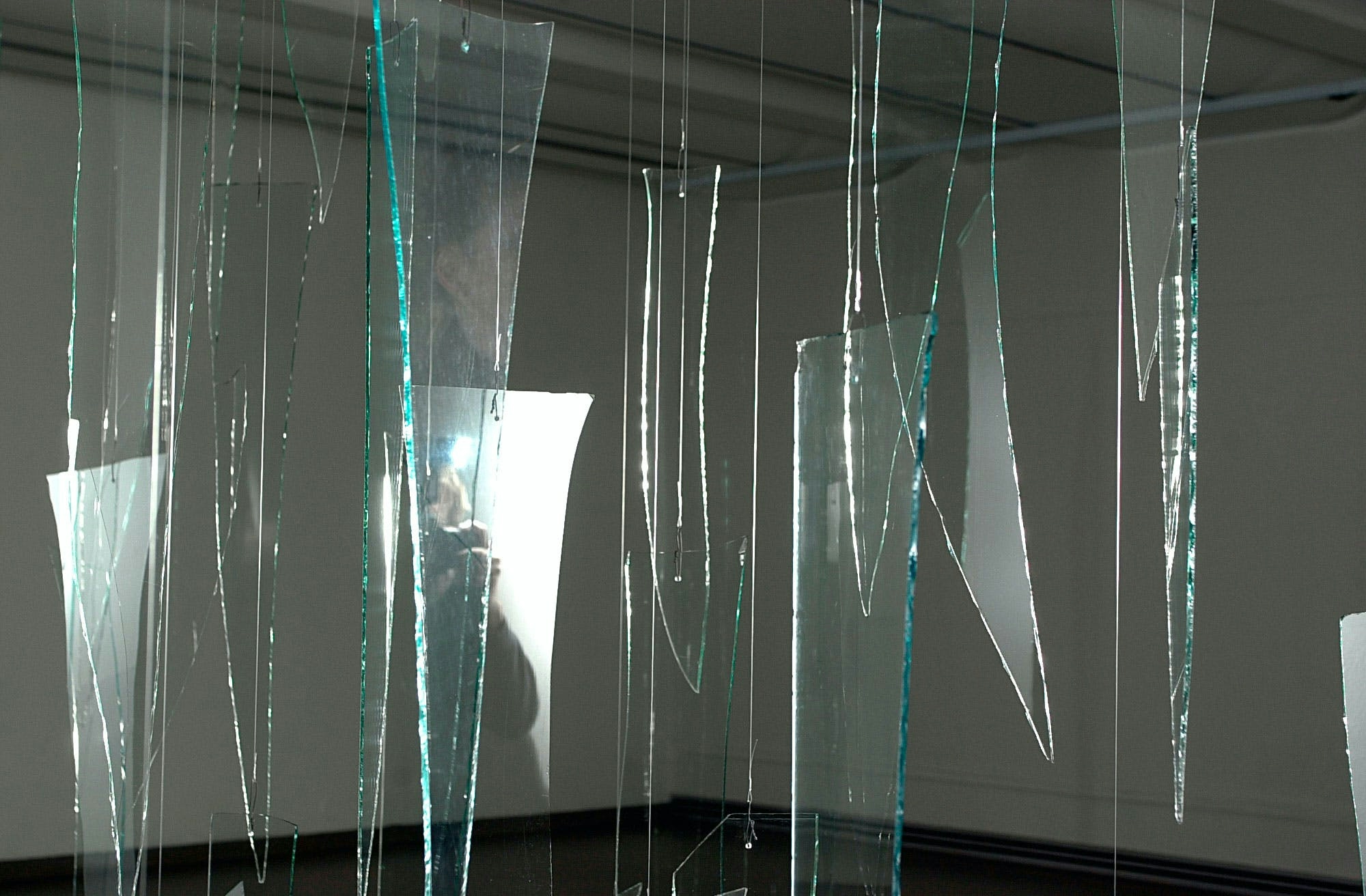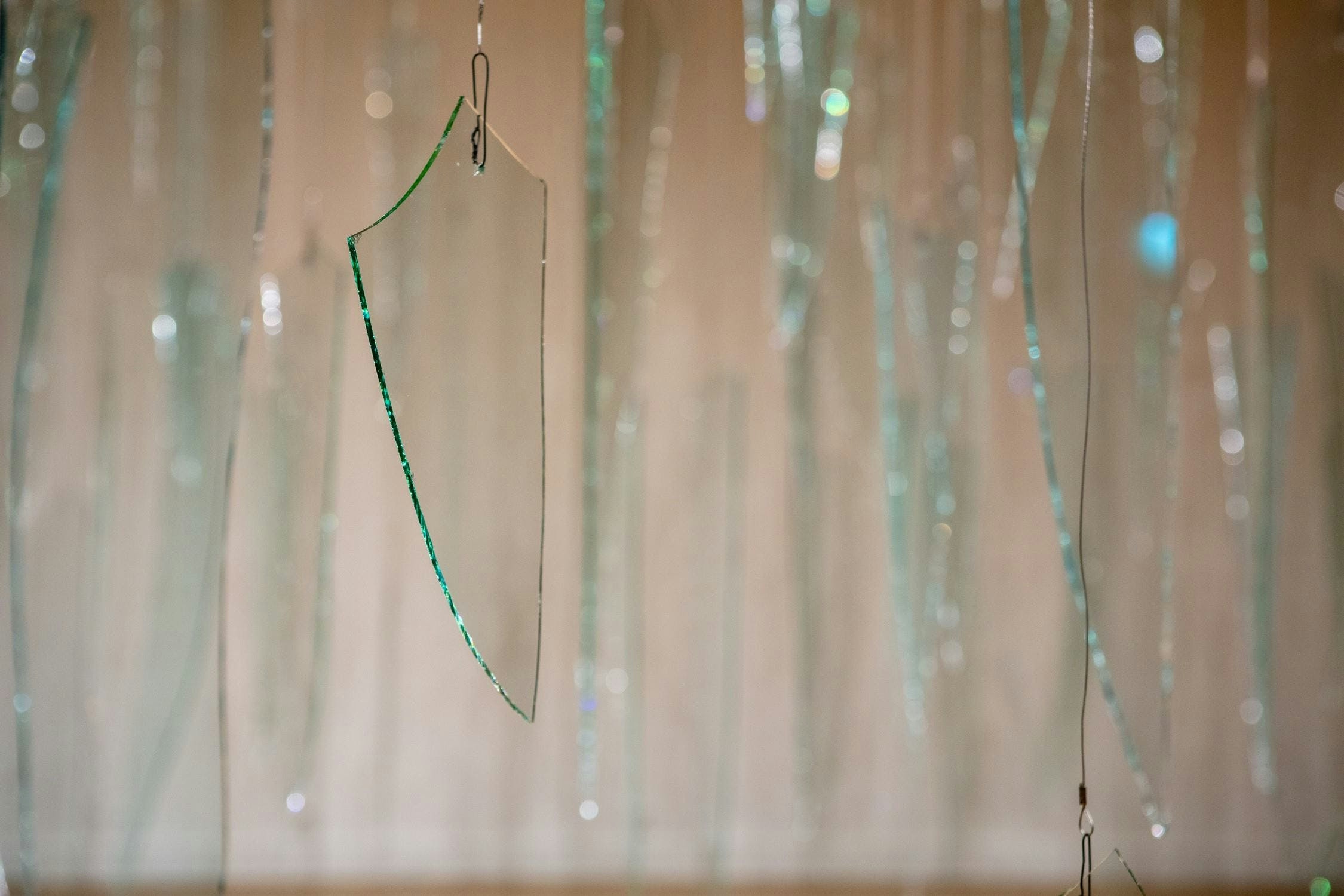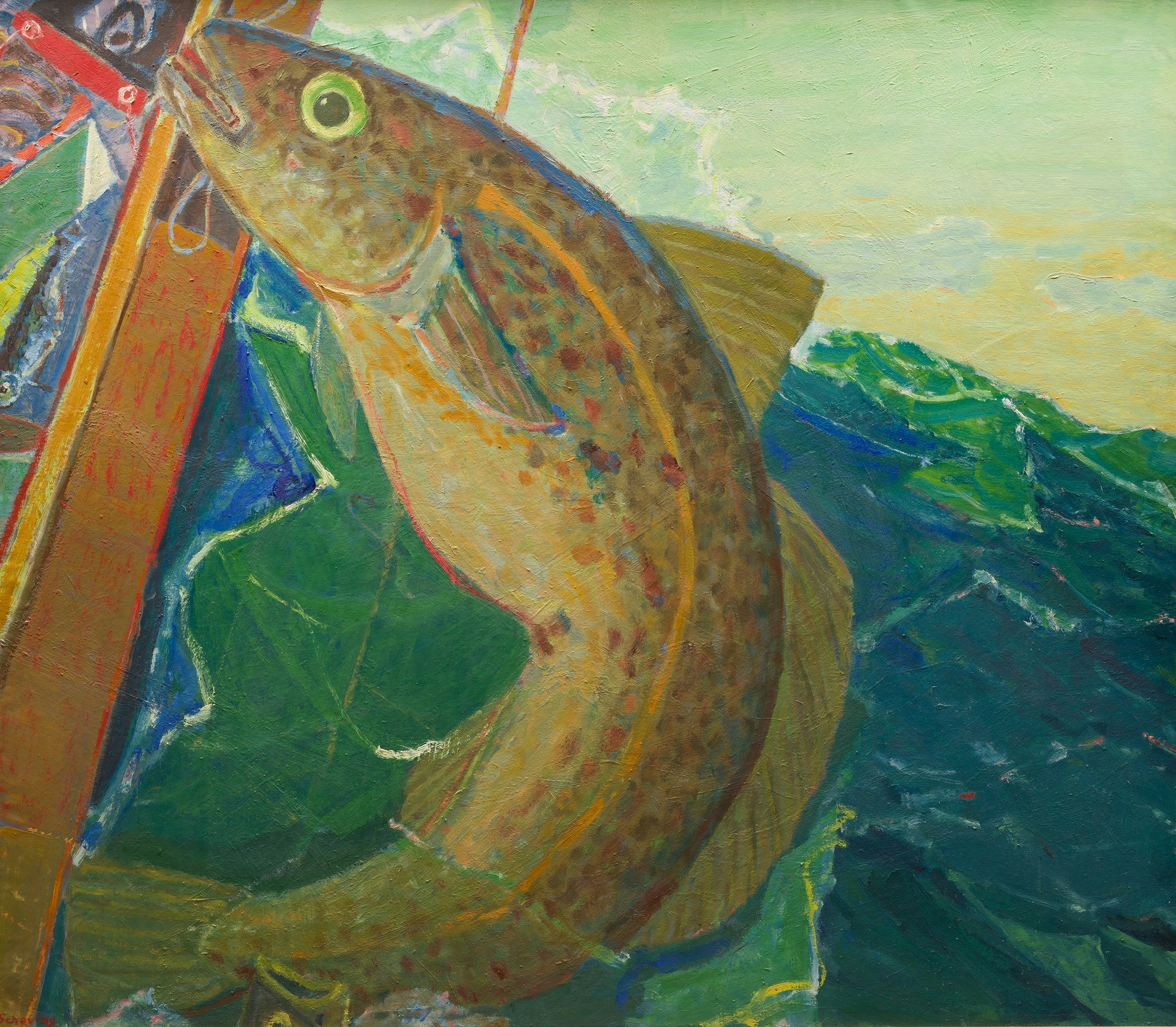Glassrain
Rúrí
4.3.2023 — 1.10.2023

Glassrain is an installation from 1984, one of the first of Rúrí‘s many works that address the theme of time and menace.

Glassrain comprises 500 razor-sharp fragments of glass, each ending in a point; the glass sheets, of variable length, hang in clusters from ceiling to floor. Each piece is suspended on a clear thread, and when a visitor walks past the piece, air currents lead the glass pieces to turn on their threads.

The 1970s were a time of turmoil in the art world. At that time young people were highly politically active: that generation, often called the ’68 generation, was characterised by severe criticism of the dominant values in society. Interest in nature conservation was increasing, and the consumer society came under attack, as advertising was seen as promoting fake “needs.” This ferment was a part of broader international trends: the US war in Vietnam, for instance, met with fierce protest.
Rúrí’s political consciousness springs from the radio news she heard early in the Cold War era. The state of the world in the 1950s and 60s was manifested here in Iceland in the news reporting of RÚV national radio (Iceland did not have TV until 1966). Reports of wars in the Far East, armed incursions in Eastern Europe and elsewhere, along with revelations of the reality of Nazi concentration camps in World War II, were a constant presence. And the consciousness that weapons of mass destruction existed on both sides of the Atlantic was not calculated to calm fears that the peace that followed World War II was simply a lull before another war. Rúrí is a member of the first generation to grow up in the knowledge that humanity had the ability to destroy all life on earth in seconds, if they so chose. That awareness has informed Rúrí’s attitudes in her art; and her long-held perspective on war and violence is manifested in many of her works.
Artist Rúrí (1951) is one of a small number of Icelandic artists who express strong political views in their work.
Glassrain
In Glassrain (1984) these ideas are clearly and decisively expressed. The work comprises 500 razor-sharp fragments of glass, each ending in a point, reminiscent of a dagger. The fragments, of varying lengths, hang in a clusters from ceiling to floor. Each piece is suspended on a clear thread, and when a visitor walks past the piece, air currents lead the glass pieces to turn on their threads. In order to fully experience the work, the observer must step inside it and stand in the midst of the glassrain – this perception cannot be achieved by simply looking at the piece: when the observer stands surrounded by the glittering glass daggers, the sense of trepidation is almost tangible.

Room
1
4.3.2023 — 1.10.2023
Project Manager of Exhibitions
Vigdís Rún Jónsdóttir
Education and Publishing Manager
Ragnheiður Vignisdóttir
Marketing and Promotion
Guðrún Jóna Halldórsdóttir
Photograph
Sigurður Gunnarsson
Conservation
Steinunn Harðardóttir
Installation
Gylfi Sigurðsson
Indriði Ingólfsson
Magnús Helgason
Steinunn Harðardóttir



